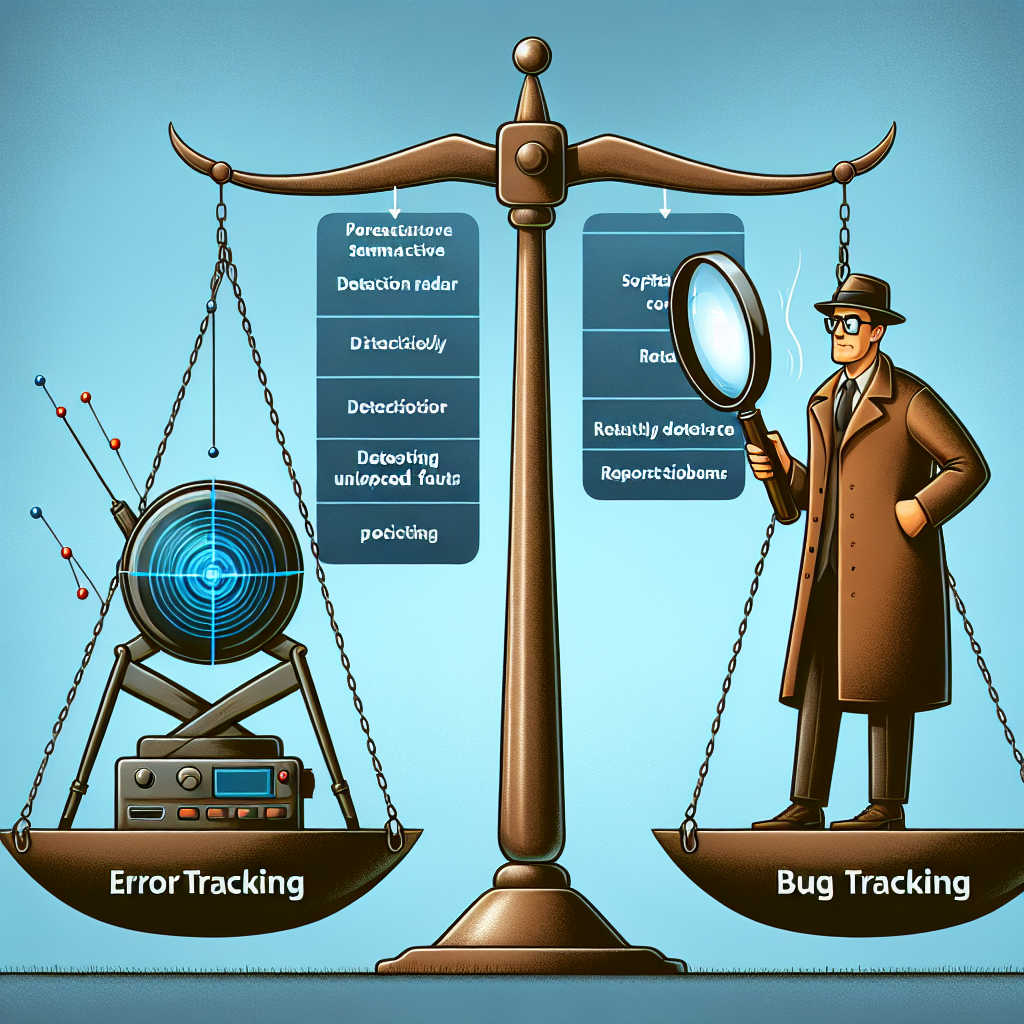Error Tracking vs Bug Tracking Platforms: An In-Depth Comparison
In the fast-paced world of software development, ensuring reliable applications is crucial for businesses and users alike. Two essential tools in the quality assurance ecosystem are error tracking platforms and bug tracking platforms. While often used interchangeably, these platforms serve distinct roles in identifying, managing, and resolving software issues. In this comprehensive guide, we will explore the differences, similarities, and best use cases for error tracking vs bug tracking platforms. We’ll also analyze which platform is best suited for your development workflow.
Table of Contents
- What Are Error Tracking Platforms?
- What Are Bug Tracking Platforms?
- Key Differences Explained
- Integration and Workflow
- LSI Keywords in Context
- Choosing the Right Platform
- Conclusion
What Are Error Tracking Platforms?
Error tracking platforms are specialized tools designed to automatically detect, monitor, and report runtime errors as they occur in your applications. These platforms focus on real-time monitoring, capturing error logs, stack traces, and contextual information, making it easier for developers to diagnose and fix issues quickly. Popular LSI keywords related to this topic include real-time error monitoring, exception tracking, and crash reporting tools.
- Automated Error Capture: Instantly records exceptions and errors in production environments.
- Detailed Diagnostic Data: Provides stack traces, user sessions, and environment data for faster troubleshooting.
- Alerting and Notification: Notifies teams via integrations like Slack or email when new errors are detected.
- Performance Metrics: Some platforms offer insights into application performance and user impact.
What Are Bug Tracking Platforms?
On the other hand, bug tracking platforms are designed for documenting, managing, and prioritizing software bugs throughout the development lifecycle. These platforms function as centralized databases where team members can report issues, assign tasks, and track progress from discovery to resolution. LSI keywords for this section include issue tracking system, defect management tool, and project management integration.
- Manual Bug Reporting: Supports user-submitted bug reports, often with screenshots or reproduction steps.
- Workflow Customization: Customizable statuses, priorities, and workflows for bug resolution.
- Collaboration: Facilitates communication between developers, testers, and stakeholders.
- Tracking and Reporting: Offers dashboards and analytics for tracking bug trends and resolution times.
Key Differences Explained
| Feature | Error Tracking Platform | Bug Tracking Platform |
|---|---|---|
| Primary Purpose | Automatic detection of live errors | Manual management of reported bugs |
| Data Collection | Real-time error logs, stack traces | Bug descriptions, steps to reproduce |
| Integration | Often integrates with bug trackers | Integrates with project management tools |
| Alerting | Real-time notifications | Manual assignment and notifications |
| Use Case | Production monitoring and rapid response | Lifecycle bug tracking and project management |
Integration and Workflow
Many development teams benefit from using both error tracking and bug tracking platforms together. For example, an error detected in production via an error tracker can automatically create a bug ticket in the bug tracker, ensuring seamless workflow and accountability. Integrated solutions improve collaboration between developers, testers, and project managers.
- Automate error-to-bug ticket creation for faster triage.
- Link stack traces and error context directly to bug reports.
- Synchronize statuses to keep everyone informed.
LSI Keywords in Context
Understanding error tracking vs bug tracking platforms involves recognizing related terms, often called LSI (Latent Semantic Indexing) keywords. These keywords help clarify the nuances and ensure content depth for both users and search engines. Examples include:
- software quality assurance
- issue management tools
- agile development workflow
- application monitoring solutions
- defect tracking system
Using these LSI keywords throughout your content ensures you cover all aspects of the topic, from error monitoring tools to issue tracking platforms and debugging workflow.
Choosing the Right Platform for Your Team
When deciding between error tracking vs bug tracking platforms, consider your team’s size, workflow, and development stage:
- For Real-Time Monitoring: If you need to catch issues as they happen in production, invest in a robust error tracking system.
- For Managing the Entire Lifecycle: If your focus is on tracking, assigning, and resolving bugs with detailed workflows, a bug tracking platform may be more appropriate.
- For a Comprehensive Solution: Integrate both tools to gain end-to-end visibility and control over software quality.
Evaluate factors such as integration capabilities, user experience, scalability, and reporting features before making a decision.
Conclusion
Both error tracking and bug tracking platforms are indispensable for modern software teams aiming for high-quality releases. While error tracking excels at real-time detection and diagnostics, bug tracking shines in managing and resolving issues across the development lifecycle. By understanding the strengths and limitations of each, and leveraging LSI keywords such as defect management tools and application monitoring, you can enhance your team’s productivity, streamline your workflow, and deliver more reliable software to your users.
Tags: agile workflow, application monitoring, bug tracking, debugging tools, defect management, error tracking, issue tracking system, project management integration, real-time error monitoring, software quality assurance
